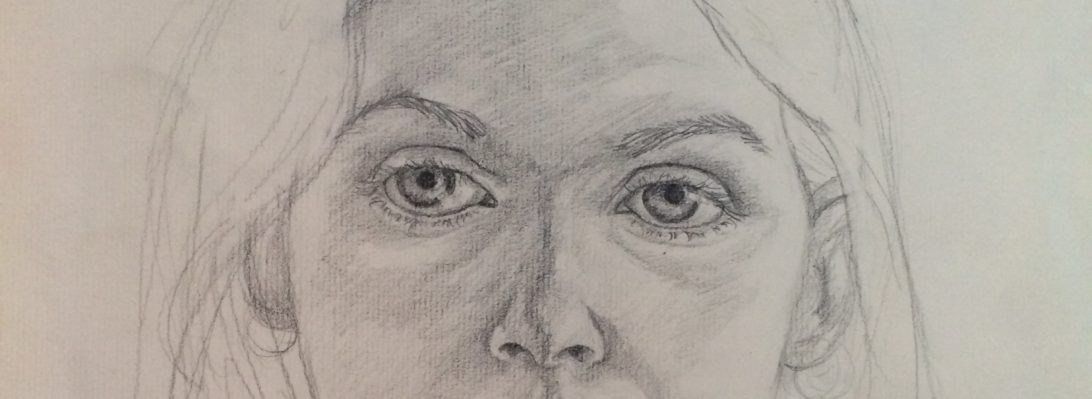If you live in or around Philadelphia, “down town” is called Center City, and it is home to so many amazing sites. If you’re an architecture nut like me, everywhere you turn is an opportunity for another painting.
The whole layout of the area centers around our City Hall (as do a few of my paintings). This amazing example of Second Empire Style architecture began construction in 1871 and was completed in 1901. The building is decorated with over 250 statues, mostly created by Alexander Milne Calder. It is still the largest municipal building in the United States. And standing atop its large clock tower stands William Penn, the city’s founding father.
At night, the views of City Hall are particularly stunning. In this view looking north on the Avenue of the Arts (Broad Street), the buildings glow in iridescent lights as does the face of the clock on City Hall. This side of Broad Street features a variety of entertainment venues and theaters including my favorite, The Academy of Music. I can’t wait for them to be able to open up again for business. This is actually one of my earliest paintings, made as a gift to my niece who was moving to France. It is still one of my most popular print images.
Connecting Center City to New Jersey is The Ben Franklin Bridge. The bridge is a breathtaking example of an early 20th century steel frame suspension bridge. The point of view in the painting is showing the way out of the neighborhood of Old City and features a full range of escape plans. Included are on-ramps to north and south I-95, bike and walking routes, the El (elevated subway line), and the Ben itself (which has the PATCO Speed line to New Jersey riding along its side and a walkway for pedestrians!) Like a lot of “shots” in the city, there is so much to see, so many details in a single glance. I love the challenge of fitting in all of the tiny details. The bridge was originally named the Delaware River Bridge and was built to commemorate the Sesquicentennial Exposition (150 years) of the signing of the Declaration of Independence.
Just a few blocks south from this collision of modern signage and hub-bub sits the very old and quiet Elfreth’s Alley. The first homes here were built around 1703, and the street went through a variety of transitions into the late 1800’s. With the creation of the Elfreth’s Alley Preservation Association, the street was saved from the wrecking ball, and gained historic status and recognition. And the tourists poured in! One of the things that enchants me about this spot is that the homes are still privately owned, which adds to the charm of a stroll down its cobblestones. This exaggerated one-point perspective view is meant to pull the viewer into the past, just as the street itself does as you walk through its array of Georgian and Federalist facades decked out in Colonial finery. Personally, I love all the bricks.
Crossing town to the northwest side of City Hall, you come to the impressive Benjamin Franklin Parkway. This wide boulevard of inner and outer lanes lined in grass and trees, was an urban renewal project begun in 1917. The plan was to replicate the grandeur of the Champs-Elysées in Paris and build museums along its sides. You can find the Franklin Museum, The Academy of Natural History, The Barnes Museum, and the Philadelphia Museum of Art there. Also lining its sides are flags from more than 100 countries, most in alphabetical order (so you can find what you’re looking for!). I have always found these flags to be a magnificent welcome to visitors and home town folk alike. They wave above as you pass, making it feel like you are part of a parade. As an artist, the flags create vibrant pops of color against the drab grays and tans of the buildings behind them. The Parkway, like the painting, aims right into City Hall again and creates yet another contrast, this time of shapes and forms of 19th century design against the flat modern skyscrapers that surround it.
The final painting in this group looks at City Hall once again, and from yet another view. This angle catches the building from Market East at Night. Both Market and Broad Streets “intersect” City Hall to form the four original quadrants of the city. Behind the stark white of lit up City Hall stands Liberty Place, the first buildings to rise above the height of the Billy Penn statue. Since then, many buildings to the west have grown ever taller to create the current silhouette of the city. I took this reference photo at the end of a very special night for me – seeing Hamilton at the Forrest Theater (!!). There had been a light rain earlier in the night that made the sidewalks glow in the neon guitar of the Hard Rock Cafe just outside of the old Reading Terminal Train Station. The pink glow added to the warmth and near quiet of the deserted streets so late at night. This painting, for me, will always be a reminder of that wonderful night.
Check out availability of paintings and prints in the Street Scenes section of the online store.






